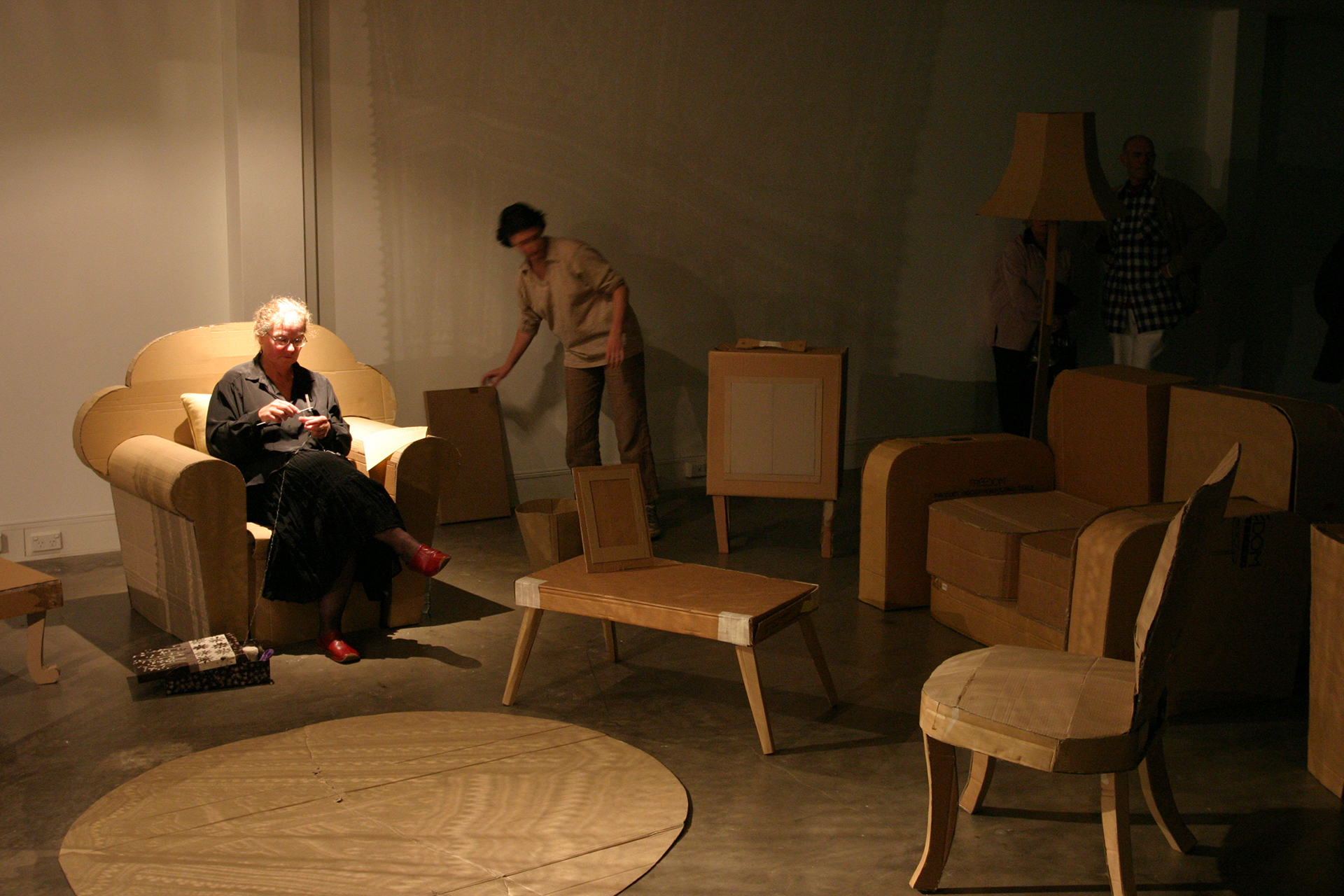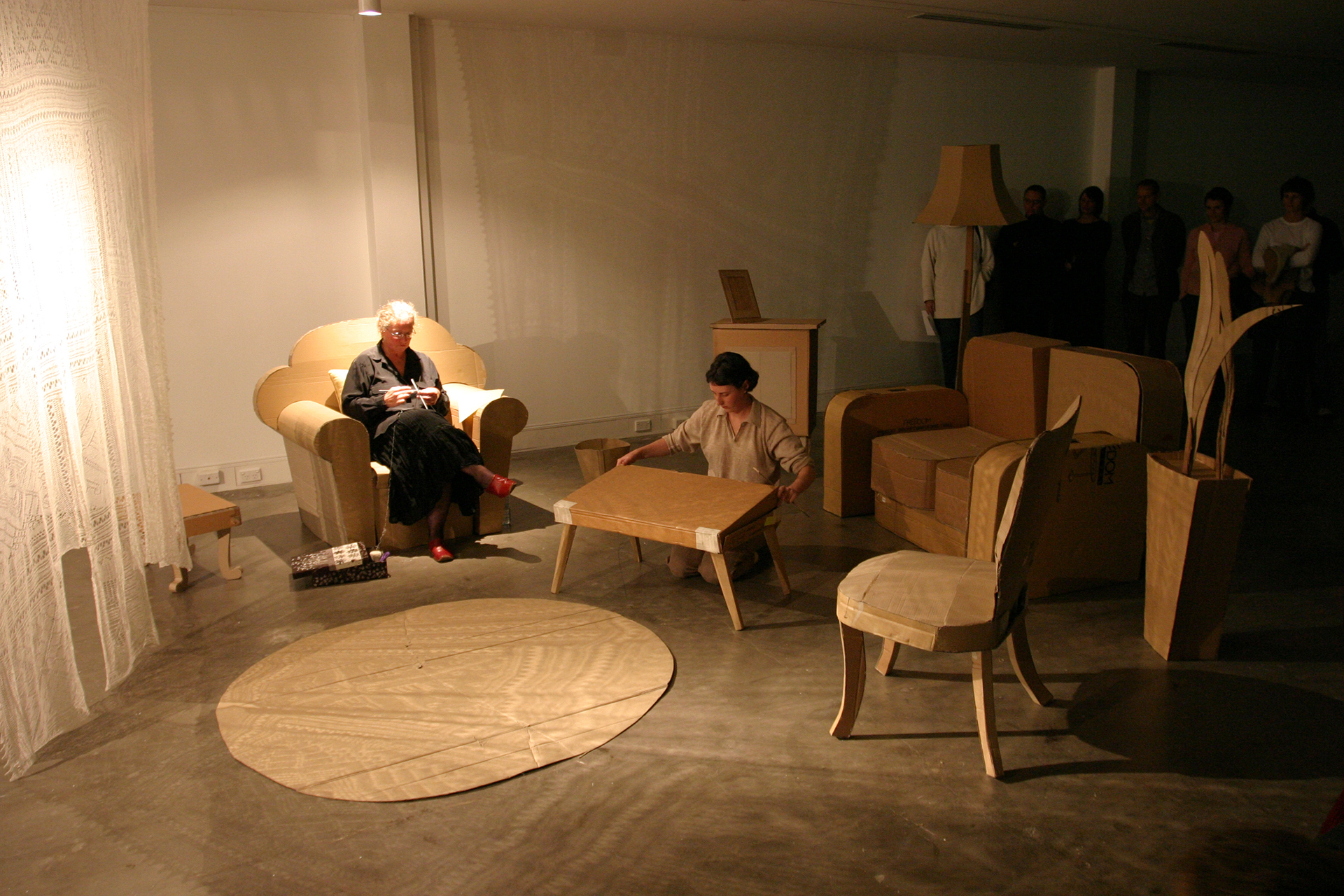Common time
Common time performed at Craft ACT: Craft and Design Centre on 22 May 2004 was developed by Ellis Hutch in collaboration with Christina Merry and presented as part of the project "There's no time" curated by Barbara McConchie. The project was realised in the wake of the devastating bushfires swept through Canberra in January 2003 and touched on themes of memory, loss, duration, fragility and ephemerality.
Read Ellis and Christina's presentation on this work here. presented as part of the Content(s) at Canberra Museum and Gallery by Craft ACT
Artist statement
Common time is the result of a collaboration between Christina Merry a lace knitter and performance artist Ellis Hutch. The work developed from a series of conversations between Hutch and Merry over a six-month period. In our conversations we discussed the significance of the objects we surround ourselves with and the spaces we inhabit.
The work takes two processes that are normally carried out as a means to an end – knitting and packing and focuses on the way these processes are performed. As Christina knitted Ellis packed up the furniture, transforming it into luggage. The sound of Christina's metal knitting needles was amplified in the space contributing to the sense of duration and rhythm of the performance.
For Common time Christina Merry produced a sampler quilt:
“The inspiration for this sampler quilt was developed from the quilts and hand knitted rugs that were made especially for the Canberra 2003 bushfire survivors. As I was one of those who lost their home in the fires I was very touched by this amazing generosity. It seemed appropriate to reflect the small amount of wool rescued from my once large wool stash into a knitting journey of experimentation on a scale I had not attempted previously.
Without compromising the integrity of the end result the lace quilt is divided into twelve samplers each of which begin in the middle and are worked out to the perimeter. Each sampler was then edged by a shamrock insertion and grafted together. The matching scalloped shamrock border was worked sideways and grafted to the samplers.
The sampler patterns were sourced from some interesting places, as I now had none. All are different sizes, which accounts for the pattern irregularities and can be considered a design feature. From inspiration to completion (well almost!) doing my own design was more time consuming and challenging than following my usually traditional patterns. Weighing approximately 350 grams and taking about 100 hours to make, it has become a truly unique expression of a quilt translated into knitted lace.
I am pleased with the end result that can only be measured in relation to the simplicity that this knitting has helped balance my life, on my own particular journey after the bushfire.”
Ellis Hutch produced a suite of cardboard furniture. Cardboard is such an ordinary material, it can be packaging, a playhouse and function as real shelters. It is easy to build with, and is plentiful. Because Ellis’ objects are made from this material they lose their specificity. This furniture it is not someone’s prized belongings it is just furniture, it could be anyone’s.
In developing this performance we took our time, to talk, to act, to breathe, to engage in a constructive process. We talked about how time gets spent, wasted, lost and used. Time is always relative. The title Common time refers to this shared process and also makes reference to the musical term meaning four beats to a bar.
Our Common time is informed by the regular habits and activities of our daily lives, the rhythms and patterns of domestic activity, the things we do when preparing for something else.

Photo: 'Pling

Photo: 'Pling

Photo: 'Pling

Photo: 'Pling

Photo: 'Pling

Photo: 'Pling

Photo: 'Pling

Photo: 'Pling

Ellis Hutch and Christina Merry, Common time performance and installation, 2004, Photo: 'Pling
